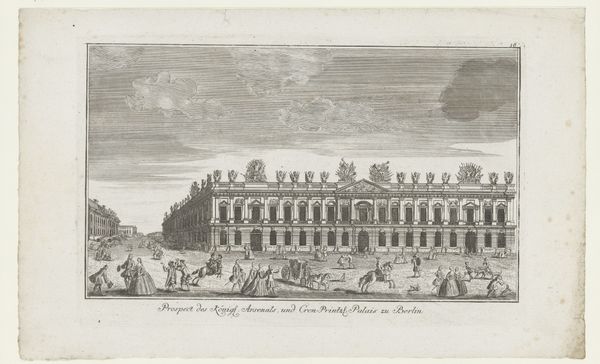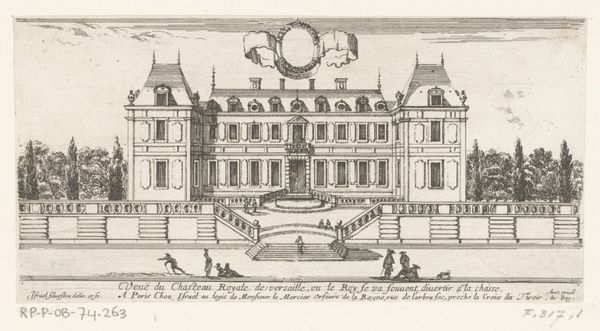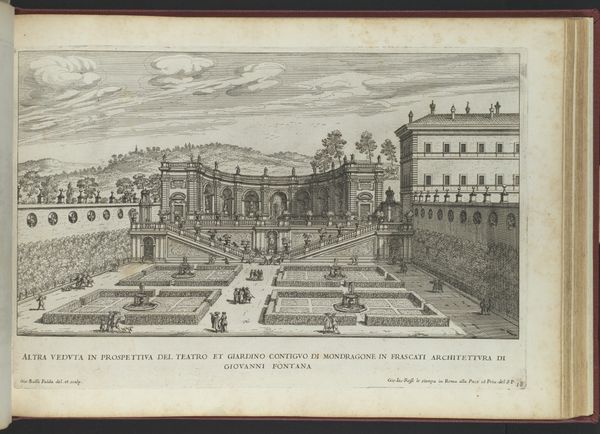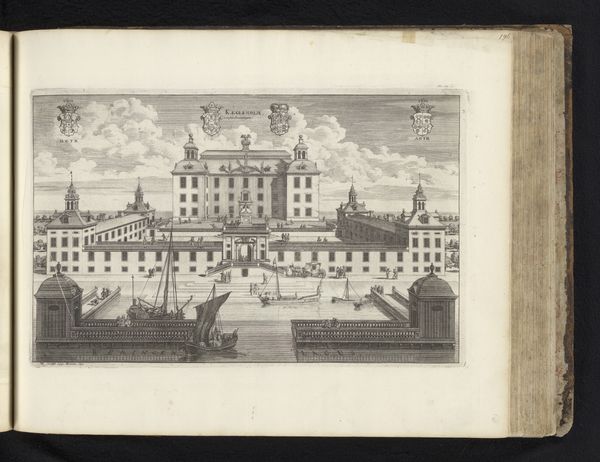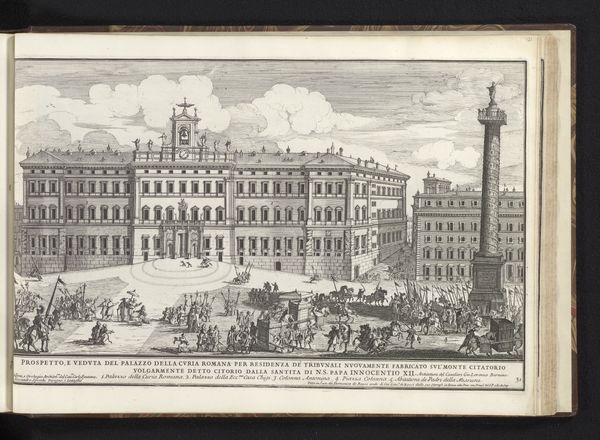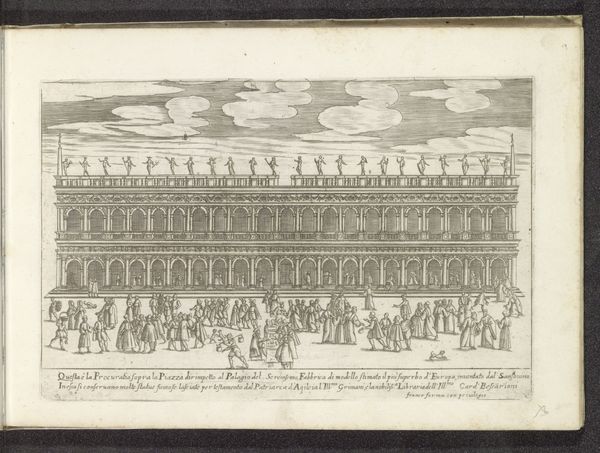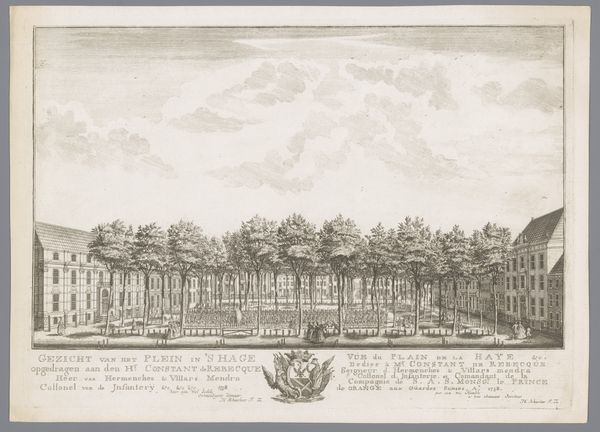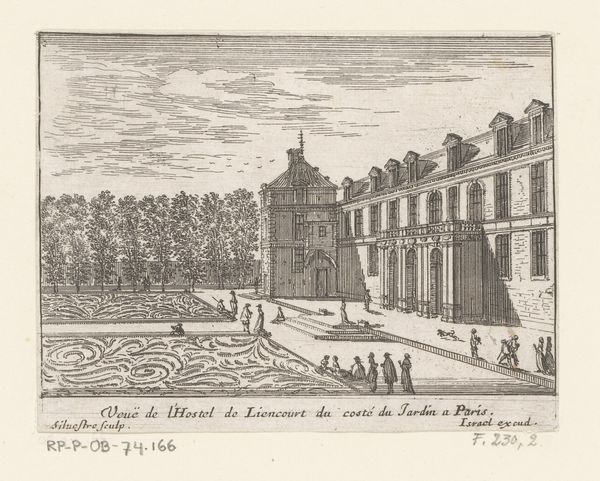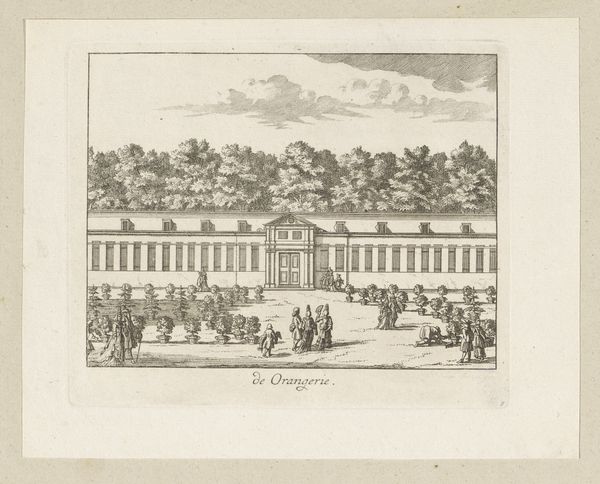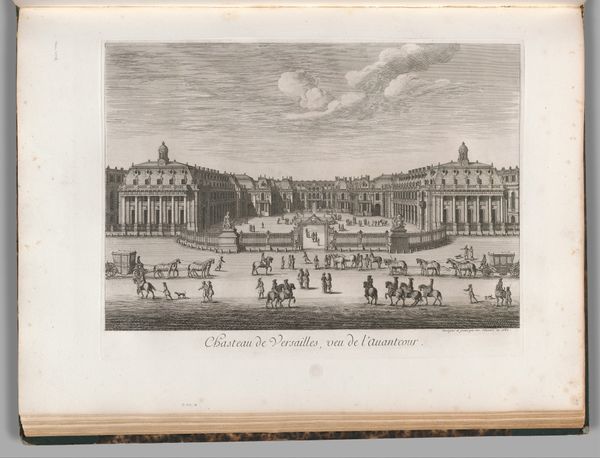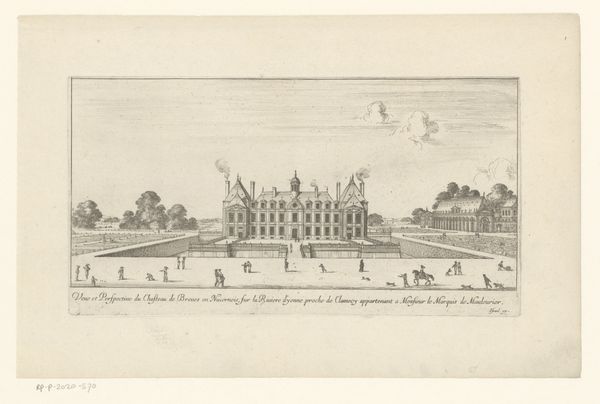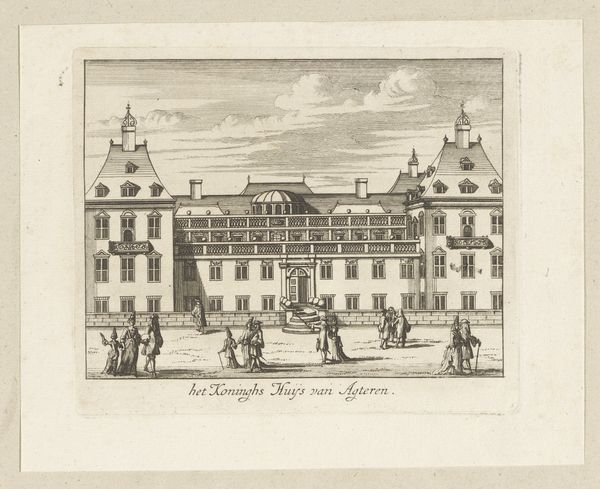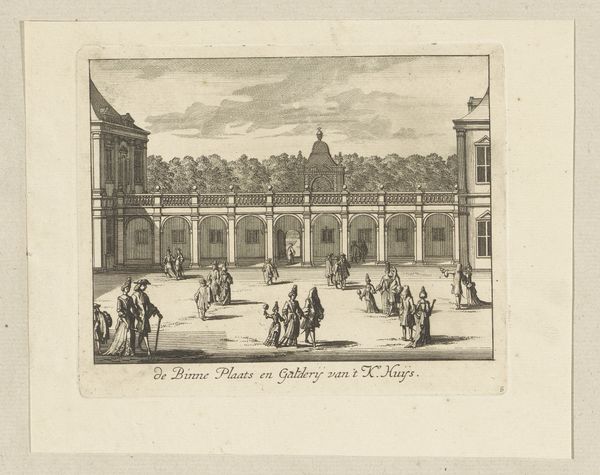
print, engraving, architecture
#
baroque
#
ink paper printed
# print
#
old engraving style
#
perspective
#
cityscape
#
engraving
#
architecture
Dimensions: height 209 mm, width 325 mm
Copyright: Rijks Museum: Open Domain
Editor: Here we have an engraving titled "Gezicht op de voorzijde van het Zeughaus, te Berlijn," dating from between 1740 and 1774. The artist is anonymous, and the medium is print – ink on paper. It depicts the armory in Berlin, a stately building dominating the scene. What do you see as the significant aspects of this piece? Curator: What immediately strikes me is the calculated presentation of power. We see not just a building, but a carefully constructed image intended to project the authority of the Prussian state. How does the artist achieve this effect? Editor: I suppose it's the symmetry, the sheer size of the building in relation to the people, and the way it's positioned as the focal point? Curator: Precisely! Consider the context: the 18th century was a time of immense social and political change. The Zeughaus, prominently featured, embodies the state's military might, but the print serves a double purpose. It showcases architectural prowess while reinforcing social order. Note the presence of everyday citizens in the foreground – how does their inclusion play into the overall message? Editor: Are they meant to highlight the armory's importance to public life, suggesting it provides protection and stability? Curator: In a way, yes. It also speaks to the rising importance of civic identity and public spectacle. Architectural prints like this served a crucial public role by disseminating ideals through visual culture and, of course, served as state propaganda. Now, what impression do you get about how people may perceive military institutions through these depictions? Editor: It's interesting how this seemingly straightforward depiction reveals so much about the power structures of the time and how art played a role in shaping public opinion. I hadn’t thought about the interplay between military might and civic identity so explicitly before. Curator: Indeed, the layering of social, political, and architectural elements provides a rich lens through which to understand the artwork's message and the culture that produced it. It’s always enlightening to remember that artworks participate in larger socio-political narratives.
Comments
No comments
Be the first to comment and join the conversation on the ultimate creative platform.
